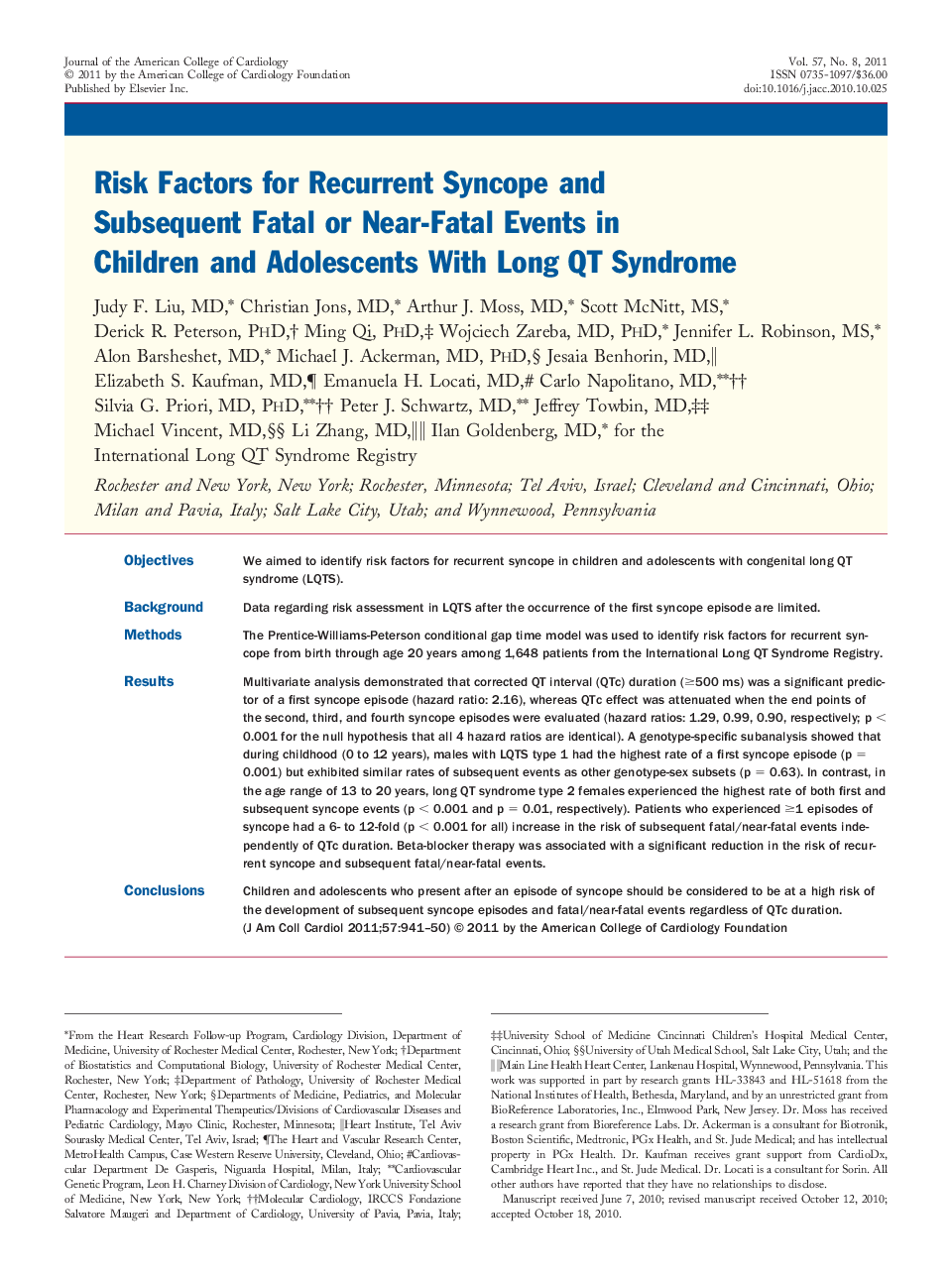| کد مقاله | کد نشریه | سال انتشار | مقاله انگلیسی | نسخه تمام متن |
|---|---|---|---|---|
| 2948636 | 1577277 | 2011 | 10 صفحه PDF | دانلود رایگان |

ObjectivesWe aimed to identify risk factors for recurrent syncope in children and adolescents with congenital long QT syndrome (LQTS).BackgroundData regarding risk assessment in LQTS after the occurrence of the first syncope episode are limited.MethodsThe Prentice-Williams-Peterson conditional gap time model was used to identify risk factors for recurrent syncope from birth through age 20 years among 1,648 patients from the International Long QT Syndrome Registry.ResultsMultivariate analysis demonstrated that corrected QT interval (QTc) duration (≥500 ms) was a significant predictor of a first syncope episode (hazard ratio: 2.16), whereas QTc effect was attenuated when the end points of the second, third, and fourth syncope episodes were evaluated (hazard ratios: 1.29, 0.99, 0.90, respectively; p < 0.001 for the null hypothesis that all 4 hazard ratios are identical). A genotype-specific subanalysis showed that during childhood (0 to 12 years), males with LQTS type 1 had the highest rate of a first syncope episode (p = 0.001) but exhibited similar rates of subsequent events as other genotype-sex subsets (p = 0.63). In contrast, in the age range of 13 to 20 years, long QT syndrome type 2 females experienced the highest rate of both first and subsequent syncope events (p < 0.001 and p = 0.01, respectively). Patients who experienced ≥1 episodes of syncope had a 6- to 12-fold (p < 0.001 for all) increase in the risk of subsequent fatal/near-fatal events independently of QTc duration. Beta-blocker therapy was associated with a significant reduction in the risk of recurrent syncope and subsequent fatal/near-fatal events.ConclusionsChildren and adolescents who present after an episode of syncope should be considered to be at a high risk of the development of subsequent syncope episodes and fatal/near-fatal events regardless of QTc duration.
Journal: Journal of the American College of Cardiology - Volume 57, Issue 8, 22 February 2011, Pages 941–950